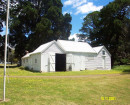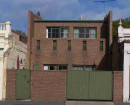FORMER ELLERSLIE COLLEGE
241 KOROIT STREET WARRNAMBOOL, WARRNAMBOOL CITY
-
Add to tour
You must log in to do that.
-
Share
-
Shortlist place
You must log in to do that.
- Download report
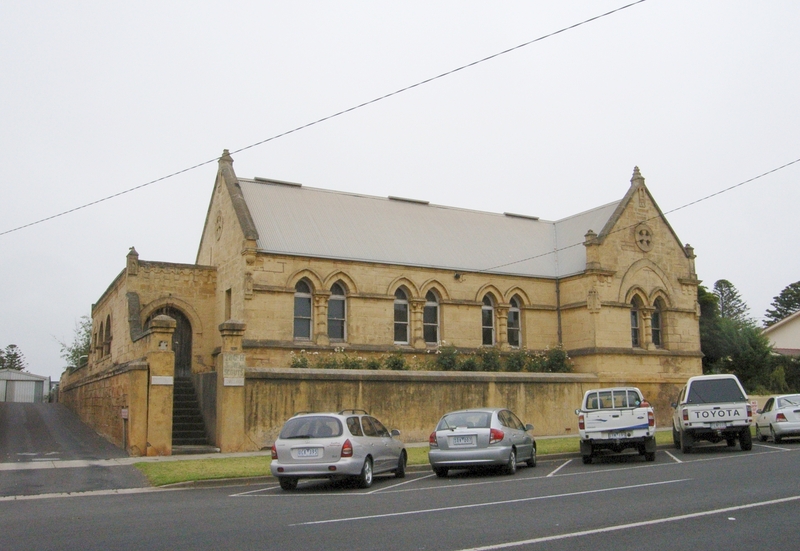

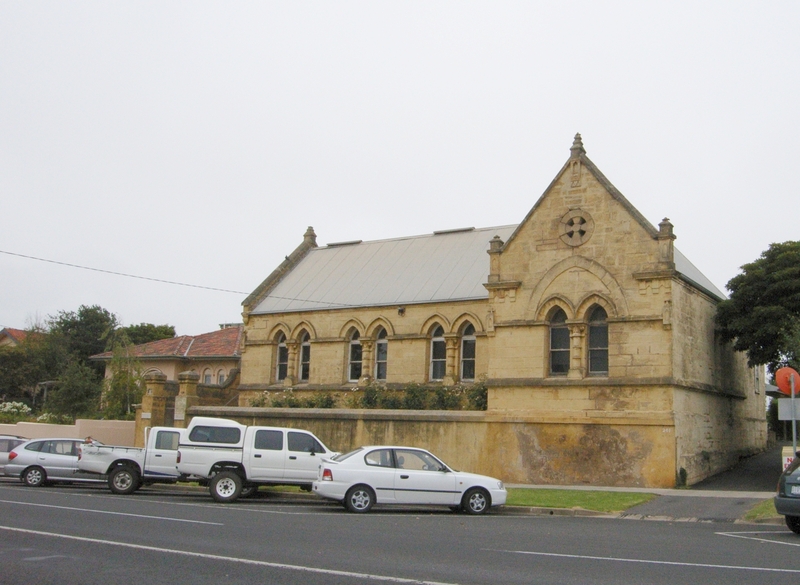
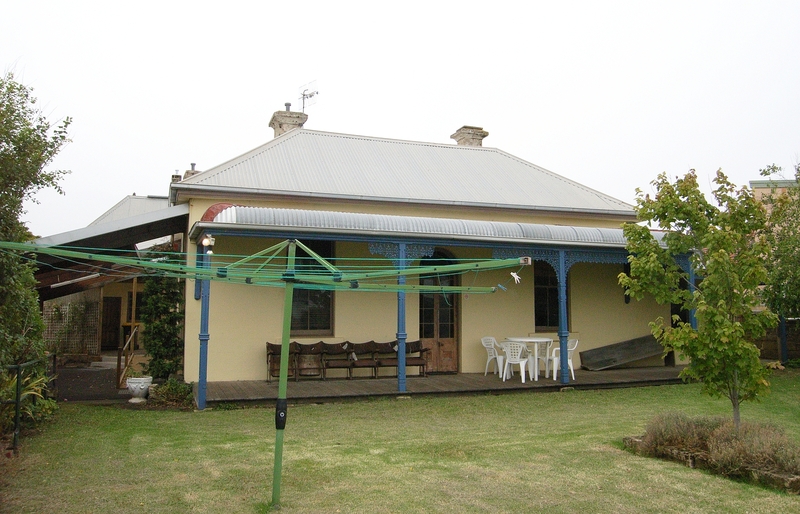

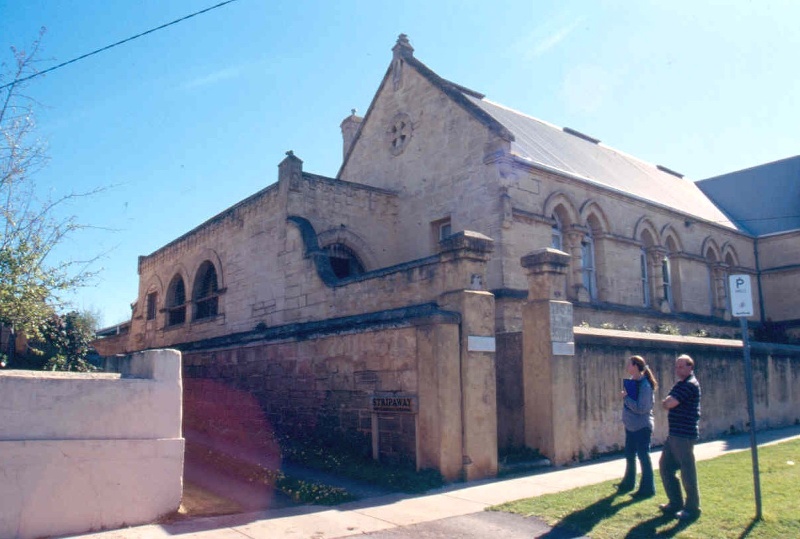
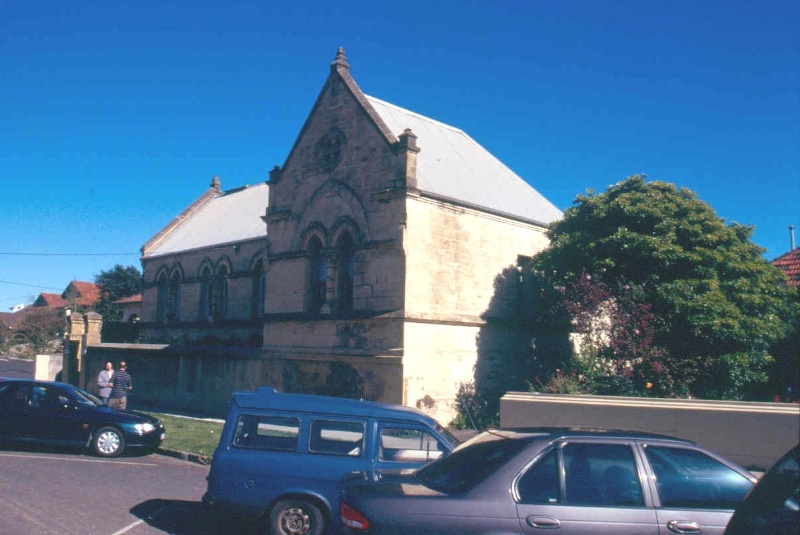
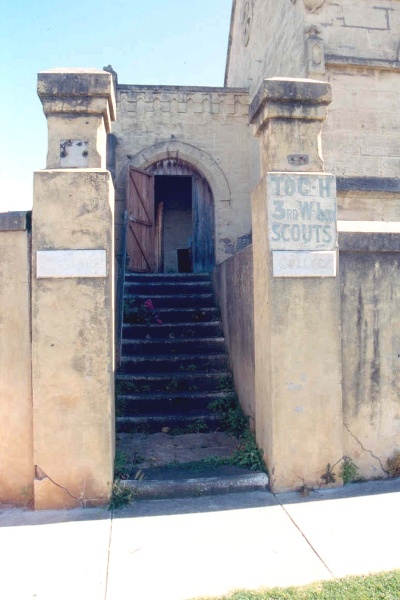

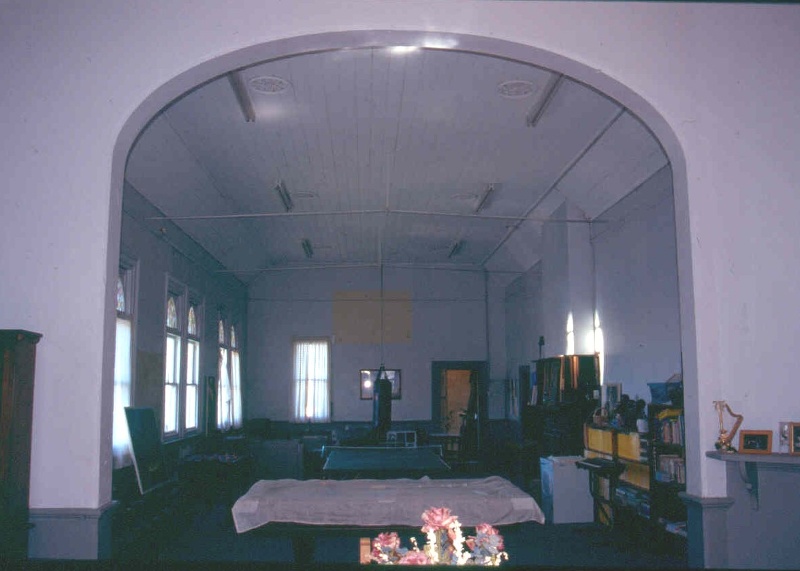

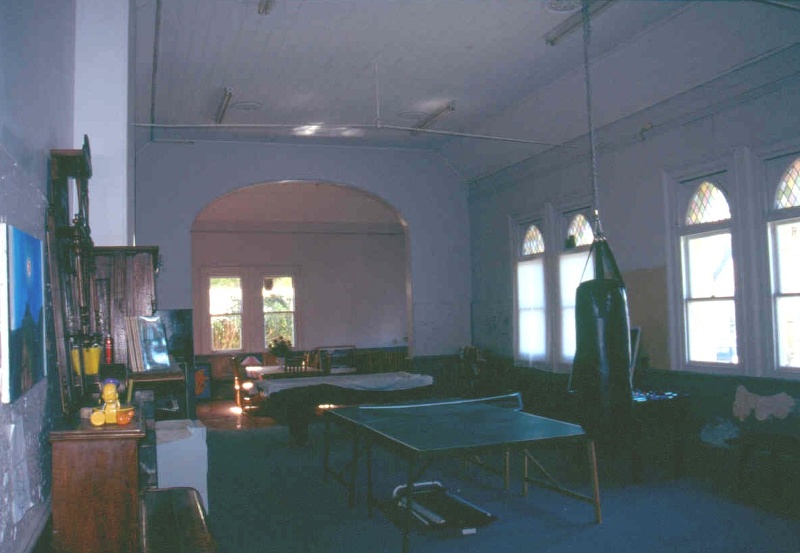

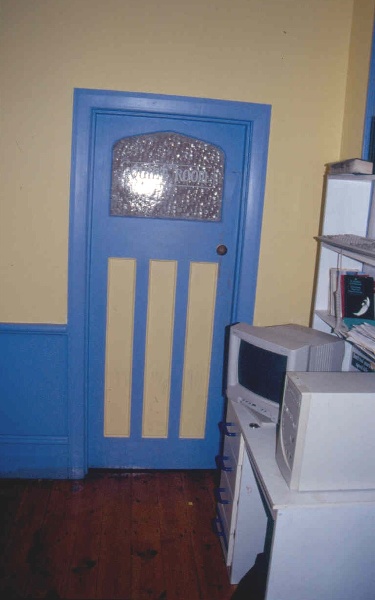

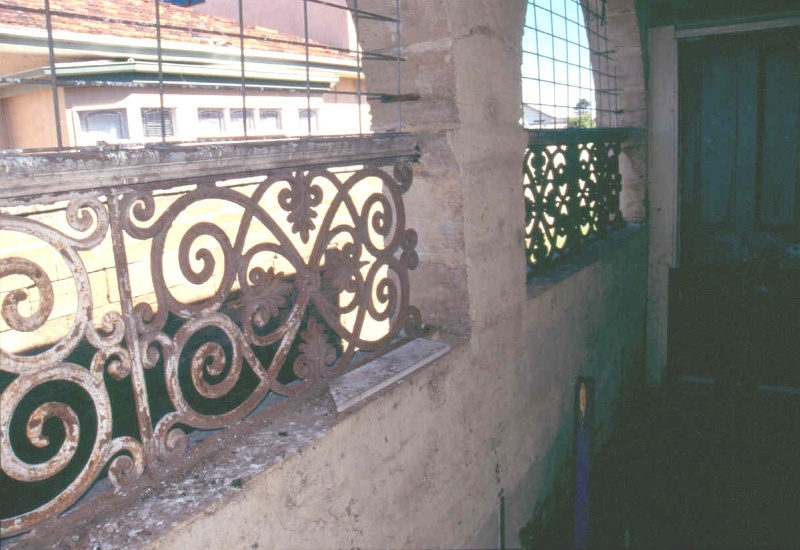

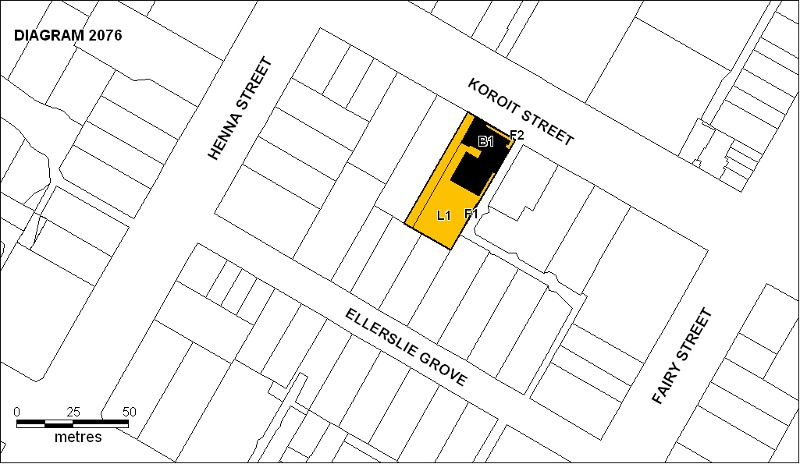
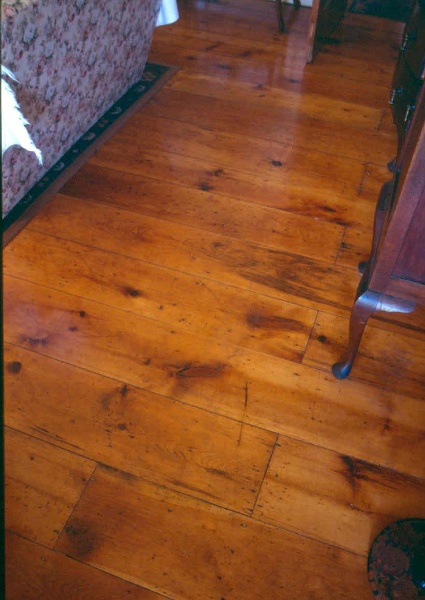
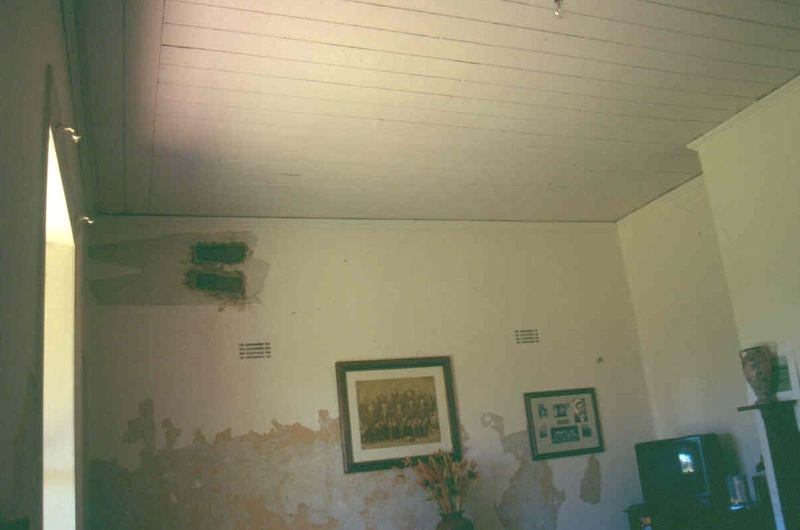
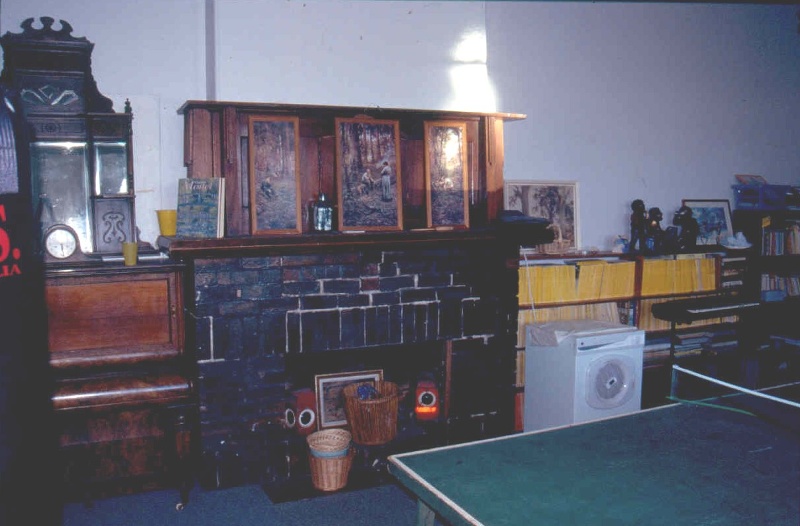
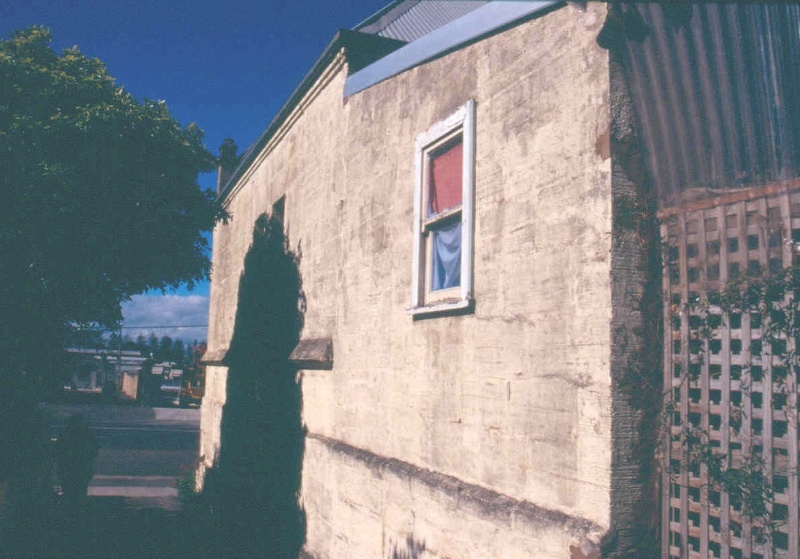
Statement of Significance
Purpose built as a school in 1889, the hall of Ellerslie College is a two room structure constructed of local Merri stone. There is a single storey stone cottage attached to the rear of the hall which appears to be of earlier construction, probably c.1870. The hall was built in an early mediaeval style and is formed by two rooms in an L shaped configuration with gable ends. The place is entered through a round arched doorway into a parapeted entry foyer. The windows to the hall are double lancet in form with bulbous centre pilasters. Internally the class rooms are plain with timber lined ceiling following the line of the roof trusses. A number of internal doors illustrate the buildings past use with the sign "Library" painted on the glass of one door and "Quiet Room" on another. However it is unclear whether this is related to the place's use as a school or as a Toc H branch.
The use of the Gothic Revival style for schools was associated with high aspirations in learning and moral vigour, particularly through the promotion of Gothic Revival architecture by the Oxford Movement and the Cambridge Camden Society. The use of Gothic Revival also had associations to the prestige of the universities of Oxford and Cambridge. Its use can be seen in a range of educational buildings of the nineteenth century both in Australia and in Great Britain which draw references from early medieval to tudor architecture.
Ellerslie College was started by a Miss Davidson on the site sometime in 1886. The land and the original cottage building was owned by Henry Kemmis who had briefly run a school from 1871 to 1874 on the neighbouring property which had been previously been the home, known as Ellerslie House, of James Aitken a local merchant, and prior to that the Royal Archer Hotel. Kemmis owned the site of both Ellerslie House (Lots 5,6 & 7, Section 13) and the site of the later Ellerslie College (Lots 8 & 9, Section 13). Although Kemmis left Warrnambool to open a School in Bathurst in 1874 he continued to own Lots 8 & 9 until 1889 and Lots 5-7 until 1890. Presumably Miss Davidson's School was successful enough to warrant buying the land from Kemmis in 1889 and building the present hall.
Despite this, Miss Davidson only ran the school for a few years more before William Lawson took over in 1892. Lawson bought the place the following year and continued to run it as a school until 1902 when Richard Lawson and William Oakley briefly occupied the place as part of the Warrnambool Academy until 1904.
Up until the early twentieth century public education only catered for students at a primary level. Secondary education was catered for only by private colleges. Most of these were denominational, financed and run under the influence of the various major Christian churches. However, as well as these denominational schools were a number of smaller private colleges that also provided boarding facilities that catered for the needs and aspirations of the middle classes, and in rural areas the children of local landowners. Most often these small private colleges took over space in larger houses or occasionally hotels.
Warrnambool as a port was a major regional centre serving the surrounding grazing, farming and trading activities. Ellerslie College was one of many small private colleges that operated in Warrnambool in the nineteenth century serving this community. However it is rare to find an example of one of these colleges that was built especially for its purpose.
Apart from being a private college the hall housed the first classrooms of the Warrnambool High School (then Warrnambool Agricultural High School) for some months in 1907 and from sometime in the 1920's was the home of the 3rd Warrnambool scout troop which had associations to the Toc H movement. The hall was also the location of the first Lutheran services in Warrnambool from 1933. The place is currently a residence.
How is it Significant?
Ellerslie College is of historical and architectural significance to the State of Victoria.
Why is it Significant?
Ellerslie College is of historical significance as a rare example of a purpose built, non-denominational nineteenth century private school.
Ellerslie College is of architectural significance as a rare example of a building built to house a small private school. That the place was built in a Gothic Revival manner is of particular note.
-
-
FORMER ELLERSLIE COLLEGE - Permit Exemptions
General Exemptions:General exemptions apply to all places and objects included in the Victorian Heritage Register (VHR). General exemptions have been designed to allow everyday activities, maintenance and changes to your property, which don’t harm its cultural heritage significance, to proceed without the need to obtain approvals under the Heritage Act 2017.Places of worship: In some circumstances, you can alter a place of worship to accommodate religious practices without a permit, but you must notify the Executive Director of Heritage Victoria before you start the works or activities at least 20 business days before the works or activities are to commence.Subdivision/consolidation: Permit exemptions exist for some subdivisions and consolidations. If the subdivision or consolidation is in accordance with a planning permit granted under Part 4 of the Planning and Environment Act 1987 and the application for the planning permit was referred to the Executive Director of Heritage Victoria as a determining referral authority, a permit is not required.Specific exemptions may also apply to your registered place or object. If applicable, these are listed below. Specific exemptions are tailored to the conservation and management needs of an individual registered place or object and set out works and activities that are exempt from the requirements of a permit. Specific exemptions prevail if they conflict with general exemptions. Find out more about heritage permit exemptions here.Specific Exemptions:General Conditions: 1.
All exempted alterations are to be planned and carried out in a manner which prevents damage to the fabric of the registered place or object. General Conditions: 2.
Should it become apparent during further inspection or the carrying out of works that original or previously hidden or inaccessible details of the place or object are revealed which relate to the significance of the place or object, then the exemption covering such works shall cease and the Executive Director shall be notified as soon as possible. Note: All archaeological places have the potential to contain significant sub-surface artefacts and other remains. In most cases it will be necessary to obtain approval from Heritage Victoria before the undertaking any works that have a significant sub-surface component. General Conditions: 3.
If there is a conservation policy and plan approved by the Executive Director, all works shall be in accordance with it. Note: The existence of a Conservation Management Plan or a Heritage Action Plan endorsed by Heritage Victoria provides guidance for the management of the heritage values associated with the site. It may not be necessary to obtain a heritage permit for certain works specified in the management plan. General Conditions: 4.
Nothing in this declaration prevents the Executive Director from amending or rescinding all or any of the permit exemptions. General Conditions: 5.
Nothing in this declaration exempts owners or their agents from the responsibility to seek relevant planning or building permits from the responsible authorities where applicable. Regular Site Maintenance :
The following site maintenance works are permit exempt under section 66 of the Heritage Act 1995, a) regular site maintenance provided the works do not involve the removal or destruction of any significant above-ground features or sub-surface archaeological artefacts or deposits; b) the maintenance of an item to retain its conditions or operation without the removal of or damage to the existing fabric or the introduction of new materials; c) cleaning including the removal of surface deposits, organic growths, or graffiti by the use of low pressure water and natural detergents and mild brushing and scrubbing; d) repairs, conservation and maintenance to plaques, memorials, roads and paths, fences and gates and drainage and irrigation. e) the replacement of existing services such as cabling, plumbing, wiring and fire services that uses existing routes, conduits or voids, and does not involve damage to or the removal of significant fabric. Note: Surface patina which has developed on the fabric may be an important part of the item’s significance and if so needs to be preserved during maintenance and cleaning. Note: Any new materials used for repair must not exacerbate the decay of existing fabric due to chemical incompatibility, obscure existing fabric or limit access to existing fabric for future maintenance. Repair must maximise protection and retention of fabric and include the conservation of existing details or elements. Weed and Vermin Control :
The following weed and vermin control activities are permit exempt under section 66 of the Heritage Act 1995, a) Weed and vermin control activities provided the works do not involve the removal or destruction of any significant above-ground features or sub-surface archaeological artefacts or deposits; Note: Particular care must be taken with weed and vermin control works where such activities may have a detrimental affect on the significant fabric of a place. Such works may include the removal of ivy, moss or lichen from an historic structure or feature, or the removal of burrows from a site that has archaeological values. Landscape Maintenance :
The following landscape maintenance works are permit exempt under section 66 of the Heritage Act 1995, a) landscape maintenance works provided the activities do not involve the removal or destruction of any significant above-ground features or sub-surface archaeological artefacts or deposits; b) watering, mowing, top-dressing and fertilising necessary for the continued health of plants, without damage or major alterations to layout, contours, plant species or other significant landscape features; c) pruning to control size, improve shape, flowering or fruiting and the removal of diseased, dead or dangerous material, not exceeding 20% of the crown of the tree within a period of two years; d) tree surgery by a qualified horticulturalist or tree surgeon necessary for the health of those plants. Public Safety and Security :
The following public safety and security activities are permit exempt under section 66 of the Heritage Act 1995, a) public safety and security activities provided the works do not involve the removal or destruction of any significant above-ground structures or sub-surface archaeological artefacts or deposits; b) the erection of temporary security fencing, scaffolding, hoardings or surveillance systems to prevent unauthorised access or secure public safety which will not adversely affect significant fabric of the place including archaeological features; c) development including emergency stabilisation necessary to secure safety where a site feature has been irreparably damaged or destabilised and represents a safety risk to its users or the public. Note: Urgent or emergency site works are to be undertaken by an appropriately qualified specialist such as a structural engineer, or other heritage professional. Signage and Site Interpretation :
The following Signage and Site Interpretation activities are permit exempt under section 66 of the Heritage Act 1995, a) signage and site interpretation activities provided the works do not involve the removal or destruction of any significant above-ground structures or sub-surface archaeological artefacts or deposits; b) the erection of non-illuminated signage for the purpose of ensuring public safety or to assist in the interpretation of the heritage significance of the place or object and which will not adversely affect significant fabric including landscape or archaeological features of the place or obstruct significant views of and from heritage values or items; c) signage and site interpretation products must be located and be of a suitable size so as not to obscure or damage significant fabric of the place; d) signage and site interpretation products must be able to be later removed without causing damage to the significant fabric of the place; Note: The development of signage and site interpretation products must be consistent in the use of format, text, logos, themes and other display materials. Note: Where possible, the signage and interpretation material should be consistent with other schemes developed on similar or associated sites. It may be necessary to consult with land managers and other stakeholders concerning existing schemes and strategies for signage and site interpretation.Minor Works :
Note: Any Minor Works that in the opinion of the Executive Director will not adversely affect the heritage significance of the place may be exempt from the permit requirements of the Heritage Act. A person proposing to undertake minor works may submit a proposal to the Executive Director. If the Executive Director is satisfied that the proposed works will not adversely affect the heritage values of the site, the applicant may be exempted from the requirement to obtain a heritage permit. If an applicant is uncertain whether a heritage permit is required, it is recommended that the permits co-ordinator be contacted.FORMER ELLERSLIE COLLEGE - Permit Exemption Policy
Permit Policy
The plain open spaces of the school rooms in 1889 building are vital to the understanding of the place as a school. Any proposal to enclose, subdivide or alter the volume of these spaces or separate the two hall spaces should be avoided. Any proposed subdivision of the spaces should only be attempted with low removable partitions that in no way alter the full reading of the internal spaces.
The austere decoration and surface treatment of the interior spaces of the 1889 building reflect their intended use as a school. Any proposal to replace or cover the existing lining boards should be avoided. Any proposal to remove any of the original fittings, fixtures or any other object or sign associated with the place’s use as a school or a Toc H branch should also be avoided.
While the architecture of the 1889 building is not outstanding, it is still of great interest and highly descriptive of the aspirations of the owner and the intended use of the place as a private school. Any proposal that would alter or remove any element or part or change the composition of the 1889 hall and the stone perimeter walls and steps should be avoided.
The original cottage section (c.1870) of the place has undergone some modification throughout its history and of itself is not of high significance, however it demonstrates a relationship to the 1889 hall and the evolution of use of the place. Any proposal that would alter the understanding of this relationship or see the removal of the structure should be avoided. This portion of the place also contains original fabric for which every effort should be made to conserve.
There is a range of later fabric connecting the 1889 hall to the original 1870 cottage, This later fabric could be removed or altered without detriment to the understanding of the place or the conservation of its significant fabric. However a great deal of consideration should given when assessing any changes to this later fabric as to any possible effect it may have on the understanding of the place and its significant fabric.
-
-
-
-
-
WARRNAMBOOL COURT HOUSE
 Victorian Heritage Register H1674
Victorian Heritage Register H1674 -
FORMER POLICE STATION COMPLEX
 Victorian Heritage Register H1698
Victorian Heritage Register H1698 -
COTTAGE
 Victorian Heritage Register H0577
Victorian Heritage Register H0577
-
'Boonderoo', House and Outbuildings
 Greater Bendigo City
Greater Bendigo City -
'Riverslea' house
 Greater Bendigo City
Greater Bendigo City -
1 Adam Street
 Yarra City
Yarra City
-
-








